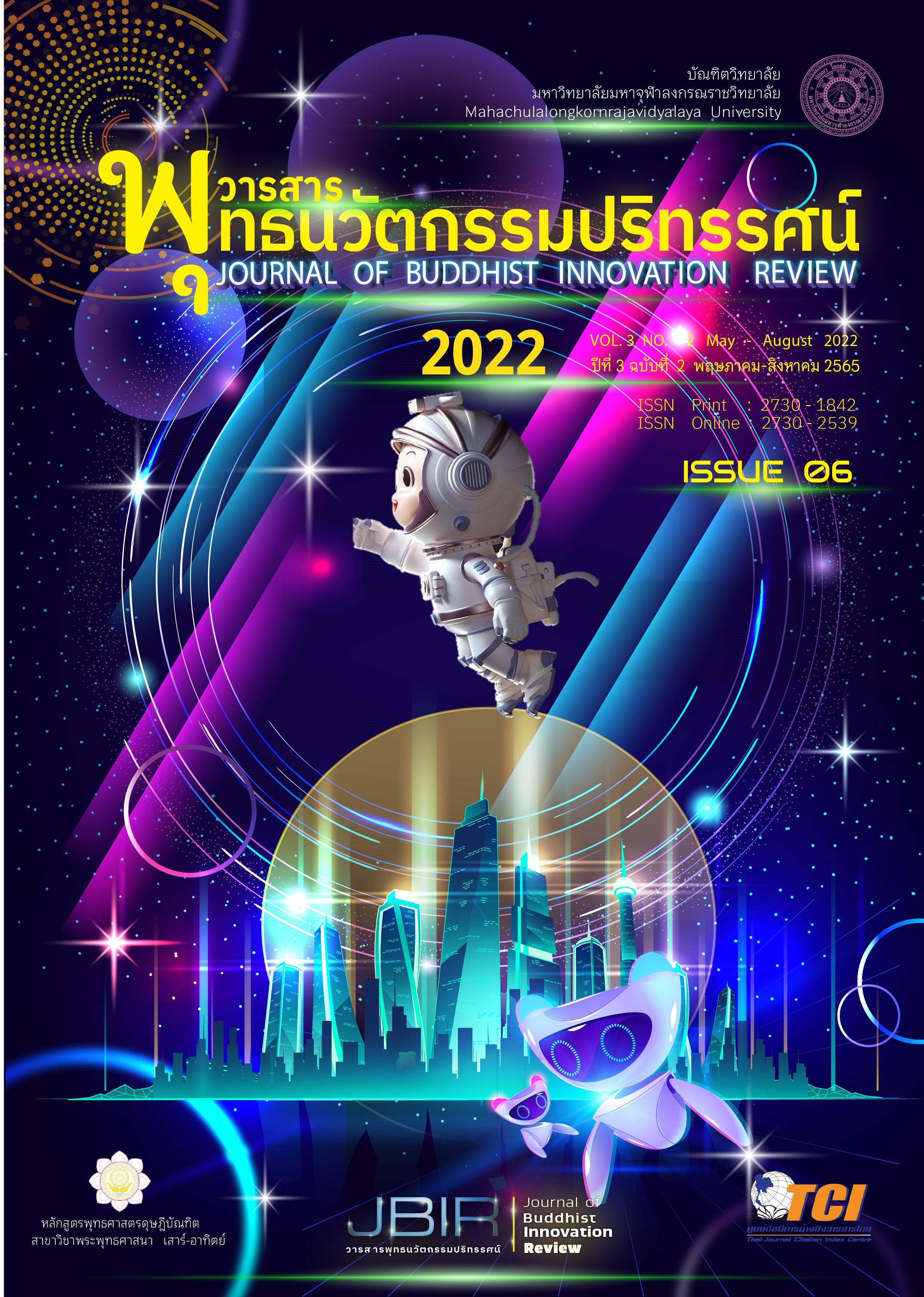The Interpretation of Buddhist Arts in Buddhist’s Perspective: A Case Study on Ultraman Buddha Image.
Main Article Content
Abstract
This academic article entitled the interpretation of Buddhist Arts in Buddhist’s perspective: a case study on Ultraman Buddha Image, is to study the Buddhist’s perspective toward the painting of Ultraman Buddha Image in the concepts of the right and freedom of the performing arts, the faith in Buddhism, and intention for Buddhist Art’s painting. The Buddha Image is a symbol of the Lord Buddha that appeared in the Characteristics of Great Man. It was built to commemorate the Lord Buddha and worship the representative of the Lord Buddha and behave according to the His teaching. The issue of studying the Buddhist’s perspective toward Ultraman Buddha painting found the agreement with the rights and freedom of artistic expression of the painter. It is not intended to make a conflict with society but express its faith in Buddhism, believe in Buddha’s teachings, and not adhere to the material, it is called Buddhist Arts. Then, the dissidents’ perspectives seem that it is the deprivation of freedom in faith, its disparagement, no ethics of the being of a painter, it is called foolish Arts.
Article Details

This work is licensed under a Creative Commons Attribution-NonCommercial-NoDerivatives 4.0 International License.
เรื่องลิขสิทธิ์/เป็นความคิดเห็นของผู้เขียน
References
เอกสารอ้างอิง
หนังสือ
ประภัสสร์ ชูวิเชียร. (2554). มหาเจดีย์สยาม. กรุงเทพมหานคร: มิวเซียมเพรส.
พระพรหมคุณาภรณ์ (ป.อ. ปยุตฺโต). (2551). พจนานุกรมพุทธศาสตร์ ฉบับประมวลศัพท์. พิมพ์ครั้งที่ 11. กรุงเทพฯ: เอส.อาร์.พริ้นติ้ง แมส โปรดักส์ จำกัด.
มหามกุฏราชวิทยาลัย. (2540). มังคลัตถทีปนีแปล เล่ม 1-5. กรุงเทพมหานคร: โรงพิมพ์มหามกุฏราชวิทยาลัย
รัฐธรรมนูญแห่งราชอาณาจักรไทย พุทธศักราช. (2560). มาตรา 31 หมวด 3 เรื่อง สิทธิและเสรีภาพของปวงชาวไทย. กรุงเทพมหานคร.
ศักดิ์ชัย สายสิงห์. (2554). พระพุทธรูปสำคัญและพุทธศิลป์ในดินแดนไทย. กรุงเทพมหานคร: เมืองโบราณ.
สมเด็จพระญาณสังวร สมเด็จพระสังฆราช สกลสังฆปริณายก (2540). ตนเป็นที่พึ่งแห่งตน ความเชื่ออันตรงต่อหลักพระพุทธศาสนา.กรุงเทพมหานคร: ธรรมสภา.
สมเด็จพระพุทธโฆษาจารย์ (ป.อ. ปยุตฺโต). (2561). พจนานุกรมพุทธศาสตร์ ฉบับประมวลศัพท์. พิมพ์ครั้งที่ 33.กรุงเทพมหานคร: มูลนิธิธรรมทานกุศลจิต.
สมเด็จพระพุทธโฆษาจารย์ (ป.อ. ปยุตฺโต). (2561). พจนานุกรมพุทธศาสตร์ ฉบับประมวลธรรม. พิมพ์ครั้งที่ 40. กรุงเทพมหานคร: มูลนิธิธรรมทานกุศลจิต.
อินทราวุธ ผาสุก และวรณัย พงศาชลากร. (2554). อัฟกานิสถานแหล่งผลิตพระพุทธรูปองค์แรกในโลก. ในสมเด็จพระกรมพระยาดำรงราชานุภาพ, กรุงเทพมหานคร: สำนักพิมพ์มติชน.
วิทยานิพนธ์
ริยา เด็ดขาด. (2546). เสรีภาพในการถือศาสนาและการเผยแพร่ศาสนาตามรัฐธรรมนูญแห่งราชอาณาจักรไทย.วิทยานิพนธ์นิติศาสตร์มหาบัณฑิต คณะนิติศาสตร์ มหาวิทยาลัยธรรมศาสตร์.
สื่ออิเล็กทรอนิกส์
รุ่งโรจน์ ธรรมรุ่งเรือง. พระอุลตร้าแมน กับคำถาม ศิลปินแสดงออกได้แค่ไหน? ศาสนานิกยอมรับได้เพียงใด ? เข้าถึงได้จากเวบไซต์ศิลปวัฒนธรรม: https://www.silpa-mag.com/culture/article_38439 (วันที่สืบค้น 10 เมษายน 2564)


